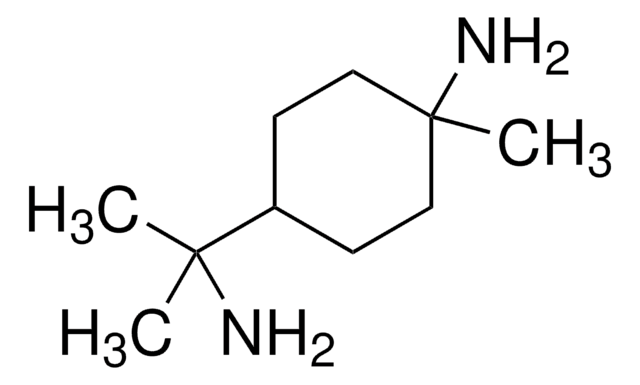381675
Dytek® EP diamine
98%
Synonim(y):
1,3-Diaminopentane, 1,3-Pentanediamine
About This Item
Polecane produkty
Próba
98%
współczynnik refrakcji
n20/D 1.452 (lit.)
tw
164 °C (lit.)
mp
−121 °C (lit.)
gęstość
0.855 g/mL at 25 °C (lit.)
ciąg SMILES
CCC(N)CCN
InChI
1S/C5H14N2/c1-2-5(7)3-4-6/h5H,2-4,6-7H2,1H3
Klucz InChI
WTSXICLFTPPDTL-UHFFFAOYSA-N
Szukasz podobnych produktów? Odwiedź Przewodnik dotyczący porównywania produktów
Powiązane kategorie
Informacje prawne
Hasło ostrzegawcze
Danger
Zwroty wskazujące rodzaj zagrożenia
Zwroty wskazujące środki ostrożności
Klasyfikacja zagrożeń
Flam. Liq. 3 - Skin Corr. 1B
Kod klasy składowania
3 - Flammable liquids
Klasa zagrożenia wodnego (WGK)
WGK 3
Temperatura zapłonu (°F)
138.2 °F - closed cup
Temperatura zapłonu (°C)
59 °C - closed cup
Środki ochrony indywidualnej
Faceshields, Gloves, Goggles, type ABEK (EN14387) respirator filter
Certyfikaty analizy (CoA)
Poszukaj Certyfikaty analizy (CoA), wpisując numer partii/serii produktów. Numery serii i partii można znaleźć na etykiecie produktu po słowach „seria” lub „partia”.
Masz już ten produkt?
Dokumenty związane z niedawno zakupionymi produktami zostały zamieszczone w Bibliotece dokumentów.
Klienci oglądali również te produkty
Nasz zespół naukowców ma doświadczenie we wszystkich obszarach badań, w tym w naukach przyrodniczych, materiałoznawstwie, syntezie chemicznej, chromatografii, analityce i wielu innych dziedzinach.
Skontaktuj się z zespołem ds. pomocy technicznej















